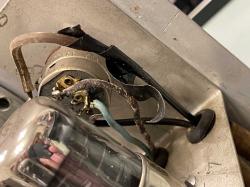- 2023
- Jun
- 27
Checking out an Eico 145 Signal Tracer
This is an Eico 145 Signal Tracer that I picked up at the Breezeshooters’ Hamfest in Butler, PA. I didn’t really need it, but the gentleman that was selling it only had a few bucks on it, so why not? This is basically a test amplifier, replacement speaker, and a replacement output transformer for troubleshooting radio and other basic consumer electronics from the vacuum tube era.
Tube compliment is:
6X5 dual diode rectifier
6SJ7 pentode as the audio preamp
6K6 pentode as the audio power amp
All the tubes for this device are octal. Later models used miniature tubes.
The unit has multiple manufacturers present in the tube lineup, so this thing probably saw a fair bit of use during it’s day. Counterclockwise from the left, it’s GE, RCA, and Sylvania, although the RCA and Sylvania tubes both exhibit the octagonal tube number symbol that indicate they were made by RCA. You can’t trust the label on these things, every manufacturer made things for every other manufacturer!
The front panel is in well-used condition, with a spray of bronze paint across the top. Was someone trying to repaint another piece of Eico gear with that sandalwood-bronze paint they liked to use?
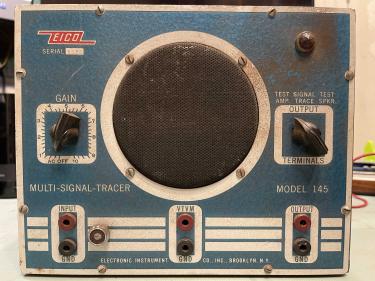
The top is rusty-ish, more so that the rest of the chassis. Perhaps it was someplace damp enough that water condensed on the top due to temperature differentials? Who knows. The handle is in excellent condition, and present - always a plus for these units.

Chassis isn’t in too bad of condition, although there are definite signs of repairs and modifications along the way, especially the jack that’s been added to the front to allow a later model signal tracer’s RF probe to be used with this device.
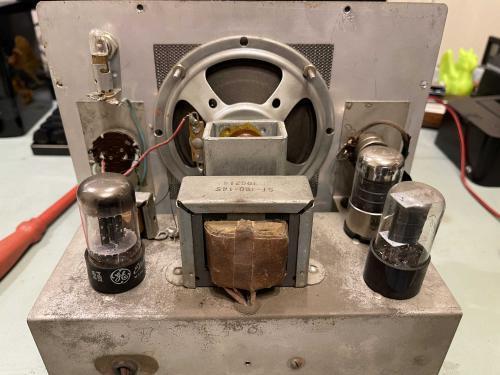
The bottom of the unit was in acceptable condition. This unit was most likely built by the end user. It’s put together in a decent manner, but is a bit of routing and soldering here and there that reveal it was built by a non-professional. That’s not an issue, it’s worked this long. (You could buy these pre-built by the factory or you could do it yourself.)
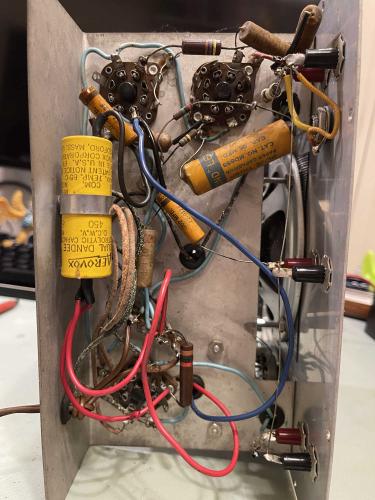
There were some parts just floating around in the chassis, including two wax capacitors for the input. These just went up through the chassis and connected to repaired wires near the function selection switch. They may be original, but have been touched at some point in their life. Note also the across-the-line capacitor (800V 0.05uF) and the added jack for the later RF probe.
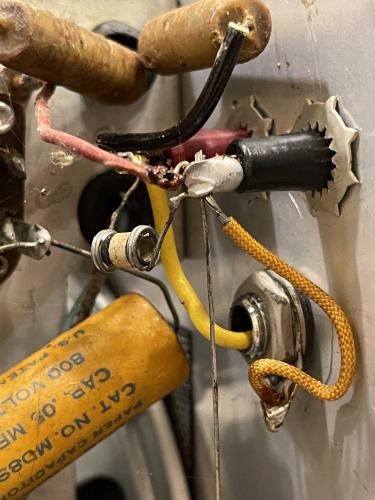
There was some burnt insulation suggesting a soldering iron had been a little careless over the years. That needs to be replaced or covered at some point, but since that’s part of the electrolytic assembly it will probably just get replaced. The electrolytic itself appears to be a replacement, as the soldering job is different (and messier) than the other joints.
One I noted here was the black cloth-coated wire running up to the top of the tube socket. This has a cold joint with enough mechanical connection to make it work. How long has this been like it is? Probably since it was built. That needs to be cleaned up and fixed if this device is ever going into use.
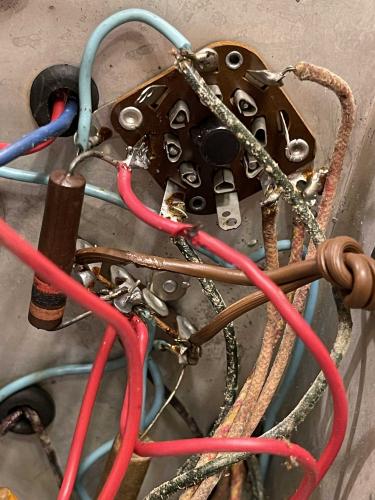
Since there’s no obvious shorts, and a quick check of the capacitors didn’t reveal anything unusual, I decided to give it the ‘ol Brute Force Reform, aka just plug it in (to a fused socket of course!) After a bit of warmup, I have light!
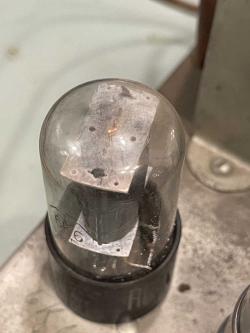
There’s no hum or excessive noise, so the device is still functional. I applied a 1KHz signal to the input, set it to Trace, and yep. It works fine. Sounds just a bit ragged, so there may be something wrong, or perhaps my cheap well used signal generator needs some work. But everything important here is operational, tubes, transformers, switches. The rest can be replaced if need be.
This gets buttoned up and is now awaiting a few minor replacements before going into use as-is. Nothing like a battle-scarred piece of equipment on your desk!
This is going to take more than minor replacements…check the next part of this series!
Next part of this series: https://wereboar.com … ignal-tracer-part-0/
